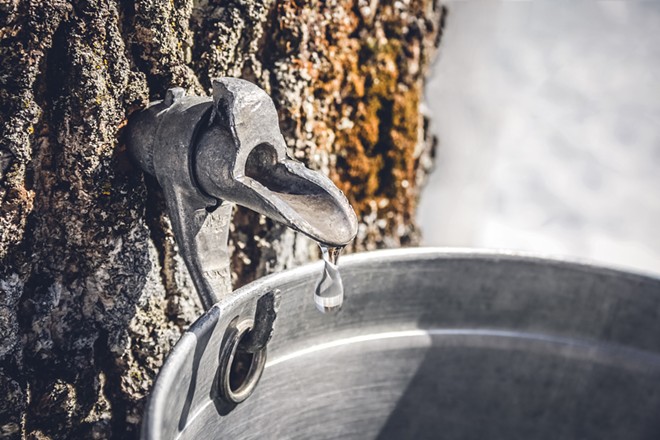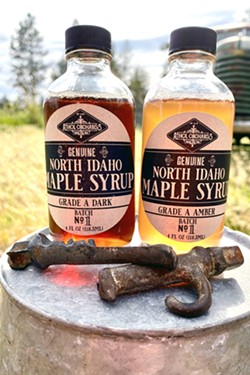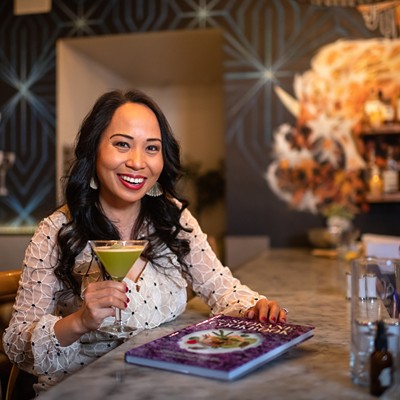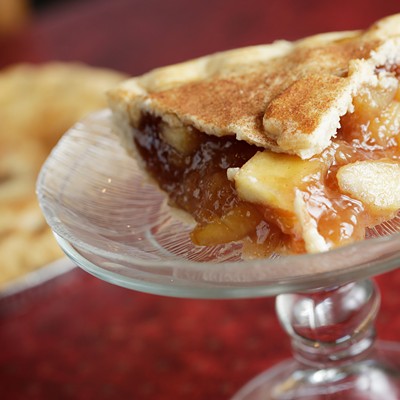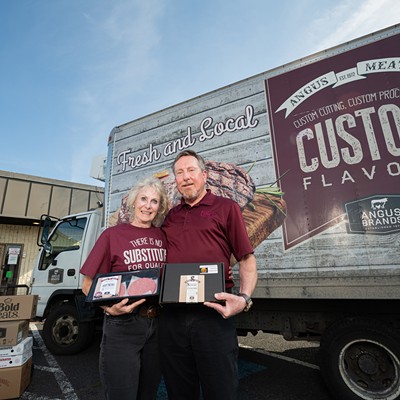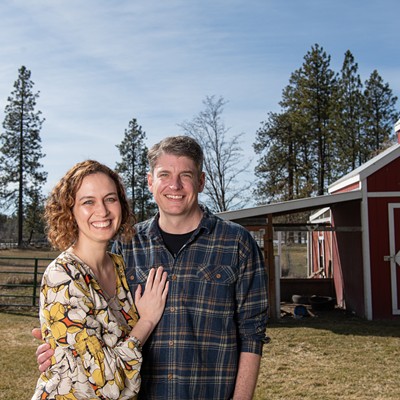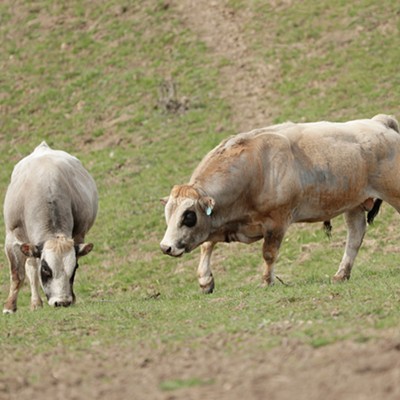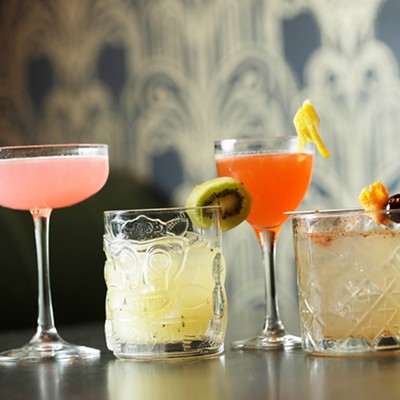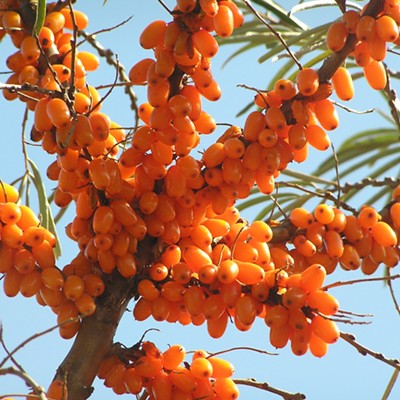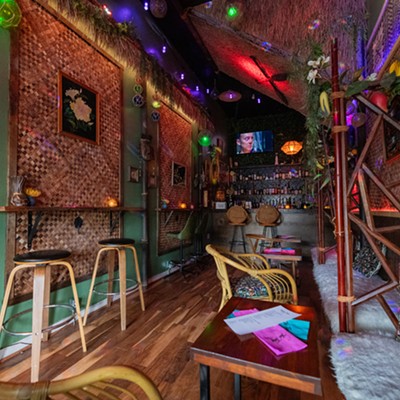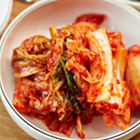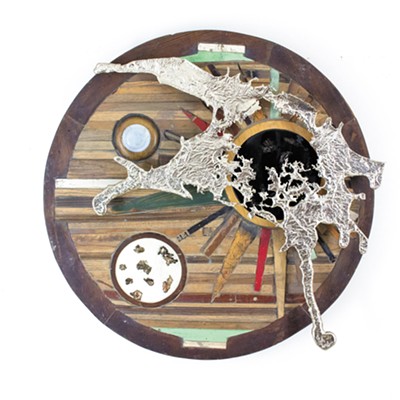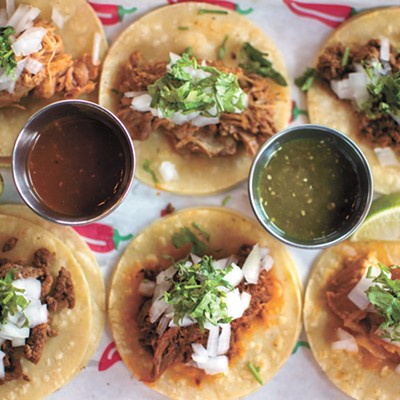Poured over pancakes, stirred into oatmeal or mixed into baked goods. These are just a few ways we like maple syrup, which for the purist must come from actual maple trees versus corn syrup tinted brown (sorry, Mrs. Butterworth's fans). Picture a thick, amber- to coffee-colored liquid oozing out of the bottle, rippling over surfaces and emitting a sweet, faintly woody aroma reminiscent of the trees that birthed it.
That's what Athol Orchards' co-founder Nikki Conley had in mind when she saw two maple trees on the North Idaho property she shares with her husband, Erreck, their daughters and a growing assortment of farm animals.
"We've been tapping our maple trees here since 2016, only producing enough for our own family to enjoy, and only during the maple sugaring season, which for us begins in February and ends mid-March, depending on the weather," Nikki says.
Indeed, making syrup takes copious amounts of sap; between 20 and 60 gallons must be boiled down to make one gallon of liquid sweet enough to be considered syrup.
Sap requirements also vary between maple tree varieties. The Conleys' maple trees are Norway maples, which can grow up to 60 feet tall, adapt well to a range of climates and are considered invasive in some areas. But the sugar content of Norway maples is lower than sugar maples or even the red and black maples abundant in the syrup-making regions of the Northeastern U.S.
Vermont, upstate New York and Maine cumulatively account for roughly 80 percent of U.S. maple syrup output. Canada — surprise — satisfies nearly 75 percent of the world's sweet tooths when it comes to maple syrup, making America the second-largest producer.
In addition to being rich with the right kind of maple trees, the Northeast has a climate conducive to sap production; namely, below-freezing temperatures at night, with daytime highs in the 40s and 50s.
The Northeast and Inland Northwest climates are remarkably similar, says Nikki, whose memories of her East Coast honeymoon inspired her to try making maple syrup from her North Idaho trees.
In 2002, the newlyweds visited New York City. Then they drove north through New England, and were thrilled to see "covered bridges, the lighthouses along the coast, historical landmarks, the Ben & Jerry's Ice Cream factory, and the sugar shacks along the country roads," Nikki says.
"From that time forward, we knew that someday we'd love to share in a part of the maple sugaring tradition and history."
First, though, the Conleys spent several years growing Athol Orchards, founded in 2016. As Erreck finished up his active-duty service in the Air Force, Nikki crafted the orchards' wildly popular apple cider syrup. She also immersed herself in the world of apples, from planting trees to building a processing facility and commercial kitchen.
Initially, Athol Orchards' apple cider syrup ($8.95 for 8 ounces) was only available at farmers markets and select Kootenai County businesses. It can now be found at numerous retailers and restaurants like Chomper Café in Hayden, and nationwide distribution is in the works.
Athol Orchards has also added other products, including caramel ($17.95 for 16 ounces) and hot spiced apple cider syrup ($13.95 for 16 ounces). It also sells pies, cookies and other baked goods at the Conleys' home-based farm stand (13467 E. Bunco Rd., Athol).
In 2020, Nikki started thinking about maple trees again, envisioning what would become Athol Orchards' North Idaho Mapleshed Project.
Like a watershed collecting water in a given region, explains Nikki, the mapleshed project would collect sap from their trees, and from wherever else they might find suitable trees. The Conleys also geared up the infrastructure necessary to boil harvested sap into syrup.
In 2021, the couple sought out private property owners who had sugar, red or silver maple trees (silver maples are similar to Norway maples).
"We signed these willing property owners up on our registry, visited their properties and tapped their trees, leaving a sealed collection bucket connected to a clear pipe and spile," or tap, Nikki explains.
Proper tree-tapping includes selecting healthy, mature trees; using appropriate and sanitized tools; proper timing and drilling technique; and knowing how many spiles a tree can handle for its age and size. Improper tapping can kill the tree, at worst, or yield little to no sap.
The Conleys visit their tapped trees roughly every other day, often finding buckets overflowing with what looks like water, but is actually clear sap.
Last season, Athol Orchards was able to produce between 4½ and 5 gallons of finished maple syrup, Nikki says.
"It sounds like a laughable amount," she says, "until you realize that it took 200 gallons of maple sap, traveling around to different properties harvesting sap every other day or so, hours upon hours of boiling, reducing, filtering, reducing, boiling down, testing with a hydrometer, filtering and a final bottling to produce that finished North Idaho Maple Syrup."
Athol Orchards is working to ensure that interest in sugaring season, as the harvest is called, not only endures year to year, but also proliferates through maple sugaring workshops.
"During February and March of 2021 we hosted approximately 2,000 homeschoolers, families, private schools, [the Coeur d'Alene] Chamber of Commerce and many more here at the farm to learn about the history, tradition, science and fun behind the maple sugaring tradition," Nikki says.
Workshop attendees witnessed Nikki harvesting sap using vintage tools she found in Maine during a recent apple conference she attended there. Participants were also treated to something called sugar on the snow: a traditional, impromptu confection created when maple syrup is heated to a soft-boil stage and poured over snow to form a kind of instant toffee.
Athol Orchards produces two types or grades of syrup ($15 for 4 ounces): Grade A Amber results from the early-season sap, while Grade A Dark is typically from later in the season. Like a light versus dark beer, the darker syrup tastes richer, while the amber syrup has an almost tangy finish.
Athol Orchards' maple syrup, as well as baked goods made with it, like maple-glazed apple fritters ($4) and maple walnut pie ($9/individual; $25/large), are available in limited supply at Athol Orchards' farm stand through tree-tapping season, which is weather-dependent.
As much as we welcome spring, once the trees start to bud at the end of March or early April, that means a bittersweet end to maple sugaring season until next year. ♦
Athol Orchards • 13467 E. Bunco Rd., Athol • atholorchards.com • 208-920-1880

